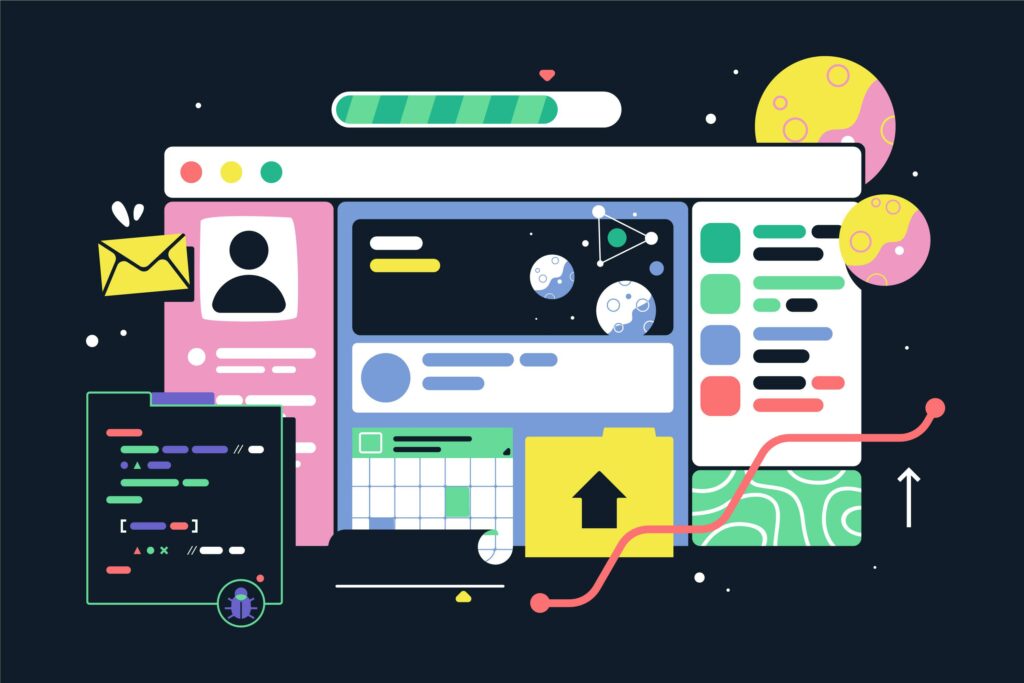In this post, we’ll explore the exciting world of web design collaboration and delve into the power of page builder plugins. Whether you’re a seasoned web designer or just starting out, you’ll discover how these tools can streamline your workflow, enhance teamwork, and elevate your creative capabilities. Get ready to unlock the potential of collaborative web design and unleash your creativity with the help of page builder plugins.
Understanding Page Builder Plugins
Page builder plugins are a game-changer for web design, as they provide a code-free way to create and customize web pages. They come equipped with an array of pre-designed templates and elements that make crafting professional-looking websites a breeze. One of the most significant advantages is the seamless collaboration they enable, allowing multiple team members to work on a project simultaneously. Additionally, their drag-and-drop functionality simplifies the process of arranging and designing page layouts, making the entire experience more intuitive and efficient.
Features and Benefits
Page builder plugins offer the advantage of responsive design options, ensuring that websites are visually appealing and functional across all devices. Additionally, they provide a range of time-saving features, including the ability to save custom designs as templates for future use. Users can also enjoy the convenience of previewing their changes in real-time, allowing for swift adjustments to enhance the website’s overall appearance. Moreover, these plugins seamlessly integrate with popular e-commerce platforms, streamlining the process of creating online stores.
Compatibility and Integration
Many page builder plugins are compatible with major WordPress themes, providing users with a wide range of design options to suit their specific preferences. Furthermore, these plugins seamlessly integrate with essential tools like SEO plugins, contributing to enhanced visibility on search engines. Additionally, users have the flexibility to incorporate third-party add-ons and extensions, further extending the functionality of these plugins to meet their unique requirements. Moreover, these plugins are designed to work well with various web browsers, ensuring a consistent and smooth user experience for all visitors to the website.
Choosing the Right Page Builder Plugin
When choosing a page builder plugin, it’s crucial to consider your website’s specific design and functionality needs. Evaluate the compatibility of the page builder plugin with your existing website technology stack to ensure seamless integration. Look for a page builder plugin that strikes a balance between ease of use and advanced customization options, catering to both novice users and seasoned developers. Additionally, consider the long-term scalability and maintenance requirements of the chosen page builder plugin to ensure it meets your website’s evolving needs while remaining easy to manage over time.
Considerations for Web Design Goals
When embarking on a web design project, it’s vital to identify the primary objectives you aim to achieve, whether it’s lead generation, e-commerce functionality, or showcasing content. Responsive design, SEO optimization, and overall user experience play pivotal roles in meeting these objectives, so it’s essential to assess their importance. Additionally, integrating features like animations, interactive elements, and multimedia content can enhance user engagement and help achieve specific design goals. To ensure seamless progress, it’s crucial to select a page builder plugin that aligns with your web design goals and provides the necessary tools to accomplish them.
Ease of Use and Customization
When evaluating page builder plugins for your website, it’s essential to prioritize user-friendly interfaces and intuitive workflows to ensure ease of use. Additionally, assessing the level of customization offered by each plugin is crucial for matching the unique branding and design requirements of your website. Look for features like drag-and-drop functionality, pre-designed templates, and flexible styling options, as they streamline the customization process. Furthermore, consider community support, documentation quality, and available tutorials to gauge the learning curve associated with each page builder plugin, aiding in your decision-making process.
Collaborative Web Design with Page Builder Plugins
Page builder plugins make collaborative web design a breeze by allowing multiple team members to work on the same website simultaneously. This streamlines the design process and fosters seamless collaboration. With real-time updates and changes, team members can provide instant feedback, enhancing efficiency. The user-friendly interfaces of these plugins simplify the design process, catering to individuals with varying levels of technical expertise. This fosters inclusivity, enabling all team members to contribute effectively. By utilizing page builder plugins, teams can efficiently manage and coordinate their tasks, leading to a more cohesive and productive web design workflow.
Streamlining Team Communication
Mastering collaborative web design with page builder plugins goes beyond just the design process. These plugins provide integrated communication tools that facilitate real-time discussions and decision-making, promoting efficient collaboration within the team. Teams can use built-in comment features to provide feedback on specific design elements, ensuring clear and effective communication throughout the web design process. Furthermore, these plugins allow team members to share ideas, resources, and updates in a centralized platform, reducing miscommunication and enhancing overall productivity. Through streamlined communication enabled by page builder plugins, teams can address issues promptly and make informed decisions collectively, fostering a harmonious working environment.
Real-time Editing and Feedback
Collaborative web design with page builder plugins empowers teams to work seamlessly on website edits in real-time, fostering an efficient and dynamic editing process. These plugins facilitate simultaneous editing by multiple users, allowing instant preview and feedback exchange to refine the website design continually. Furthermore, the inclusion of features like revision history tracking ensures flexibility by enabling effortless reversion to previous design versions if necessary. This iterative approach to web design promotes continuous improvement, resulting in polished and refined outcomes for the website.
Conclusion
In conclusion, mastering collaborative web design with page builder plugins offers a range of benefits, including streamlining the design process, fostering seamless collaboration among team members, and facilitating real-time communication and feedback exchange. When selecting a page builder plugin, it’s crucial to consider its compatibility with web design goals, ease of use, customization options, and integrated communication tools. By leveraging the capabilities of these plugins, teams can work efficiently, address issues promptly, and achieve polished and refined outcomes for their website. Ultimately, collaborative web design with page builder plugins empowers teams to create compelling and user-centric website designs while promoting a harmonious and productive working environment.


